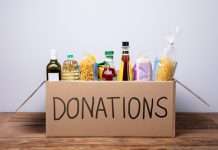 As we continue to face unprecedented times, we are still trying to help our children find a sense of normalcy regarding their studies. Several schools have gone back to in-person classes in the last few months, while others have combined this modality with remote learning. It is still a period of adjusting and adapting, and it can be challenging for kids to feel comfortable and at ease. For that reason, I have compiled a couple of science experiments they can try from home to have fun while still learning.
As we continue to face unprecedented times, we are still trying to help our children find a sense of normalcy regarding their studies. Several schools have gone back to in-person classes in the last few months, while others have combined this modality with remote learning. It is still a period of adjusting and adapting, and it can be challenging for kids to feel comfortable and at ease. For that reason, I have compiled a couple of science experiments they can try from home to have fun while still learning.
I can picture parents dreading the idea of turning their homes into mini science laboratories—but fear not! These experiments will allow your children to learn and have fun and your living space to remain undamaged. All you need is a flat surface, such as a table, a countertop, a tray, and some fabric—such as tablecloths, towels, or blankets you no longer use—to collect the mess.
These three activities are perfect for a day of remote learning or a fun weekend afternoon. The main goal is to encourage kids to keep learning about science and chemistry in a more appealing manner. With a few, essential ingredients from home, you will be ready to experiment!
It is now time to transform your home into your children’s mini science laboratory:
Dancing Raisins
Ingredients: Baking soda, raisins, warm water, vinegar, and a clear plastic bottle.
Environment: Flat surface with a tablecloth.
Process: Mix the warm water with the baking soda and add the raisins into a clear plastic bottle. Then, fill the rest of the bottle with vinegar. The chemical reaction will cause the raisins to appear to dance.
Learning Opportunity: The children can ask themselves why the raisins are dancing and what kind of chemical reaction allows this to happen. They can also think about the ingredients in terms of solids, liquids, and gases to see if this helps them reason through it.
Baking Soda and Vinegar Bubbles
Ingredients: Baking soda, vinegar, and a container.
Environment: Flat surface with a tablecloth.
Process: Mix the baking soda with the vinegar inside the container. The chemical reaction between these two ingredients will create bubbles.
Learning Opportunity: This gives the kids an excellent opportunity to think about what is inside the bubbles and question what sort of chemical combination can cause this reaction. They can also think about the ingredients in terms of solids, liquids, and gases to consider whether a chemical or a physical change occurred.
Balloons with No Air
Ingredients: Baking soda, balloons, bottle, lemon juice, lime juice, and vinegar.
Environment: Flat surface with a tablecloth.
Process: Pour either lemon juice, lime juice, or vinegar into the plastic bottle. Then, using a funnel or a small measuring spoon, place the baking soda in the balloon. Next, carefully place the opening of the balloon around the mouth of the bottle without getting any of the baking soda in the liquid. When you are ready for the reaction, lift the body of the balloon and allow the baking soda to fall into the acidic vinegar or lemon juice. The chemical reaction will cause bubbles that will create gases that inflate the balloon.
Learning Opportunity: This serves as a great opportunity to ask the kids what they believe the reason is for the balloons to inflate. You can also ask them what they think would happen if the balloons were not there. To encourage the discussion, you can experiment with other liquids, such as water and coffee.
Tip: Make sure you keep the bottle away from your face when pulling the balloon off to avoid getting anything in your eyes during cleanup.
These three experiments give children the chance to have fun and learn more about science and chemistry. It is an opportunity to help them question why specific reactions happen and let them handle the tasks hands-on.
Stephanie Ryan
Stephanie Ryan has a strong background in chemistry and biology and enjoys applying her background to develop superior educational products. She is also interested in how mathematics and science intertwine. Stephanie Ryan has experience in curriculum development, assessment, and training staff how to use technology and software. Stephanie Ryan has taught science in formal and informal settings from K-16, and developed curricula for After School Matters programs in Chicago, Illinois.
Stephanie Ryan earned her Ph.D. in the Learning Sciences from the University of Illinois at Chicago. She has an M.S. and B.S. in chemistry, from the University of Illinois at Chicago and Saint Mary’s College, respectively.
For more information, please visit http://www.etslearnaboutscience.com/ or www.ryaneducationconsulting.
Follow Stephanie Ryan on Instagram @LetsLearnAboutScience



















